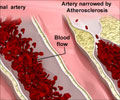The annoying habit of fidgeting the legs while sitting has shown to improve the leg vascular function and thereby boost heart health.

- Fidgeting the leg helps improve leg vascular function which cuts the risk of cardiovascular diseases.
- After three hours of sitting, the leg that was moved had much higher flow of blood
- The leg that was kept idle showed a decrease in blood flow
- It may prove helpful for people who have to man the desk at the office for long hours.
"Many of us sit for hours at a time, whether it's binge watching our favorite TV show or working at a computer," said Dr. Jaume Padilla, an assistant professor of nutrition and exercise physiology at MU and lead author of the study. "We wanted to know whether a small amount of leg fidgeting could prevent a decline in leg vascular function caused by prolonged sitting. While we expected fidgeting to increase blood flow to the lower limbs, we were quite surprised to find this would be sufficient to prevent a decline in arterial function."
The researchers studied the leg vascular function of 11 healthy young men and women. They compared the results after three hours of sitting. While sitting, the participants were asked to move one leg while the other remained stationary. The participants were asked to tap the foot for one minute and rest it for four minutes.
The participants moved their feet 250 times per minute. The researchers then measured the blood flow of the popliteal, an artery in the lower leg. They found that in the leg that was moved, the rate of blood flow had increased and the blood flow in the stationary leg had reduced.
The study that appears in the American Journal of Physiology, states that an increased blood flow and the sheer stress that occurs along with it is important for vascular health. Sheer stress is the friction of the flowing blood on the arterial wall.
Prolonged sitting, especially among older people, is known to cause deep vein thrombosis. It is a condition where a clot forms in the deep vein of the leg. It can cause symptoms like swelling, ache, redness and warmness. But in some cases, it can cause pulmonary embolism which occurs when the clot detaches and travels to the lungs.
The protective role of fidgeting is yet to be established. Researchers also warn that it cannot substitute walking or exercise that provides greater benefits to cardiovascular function.












